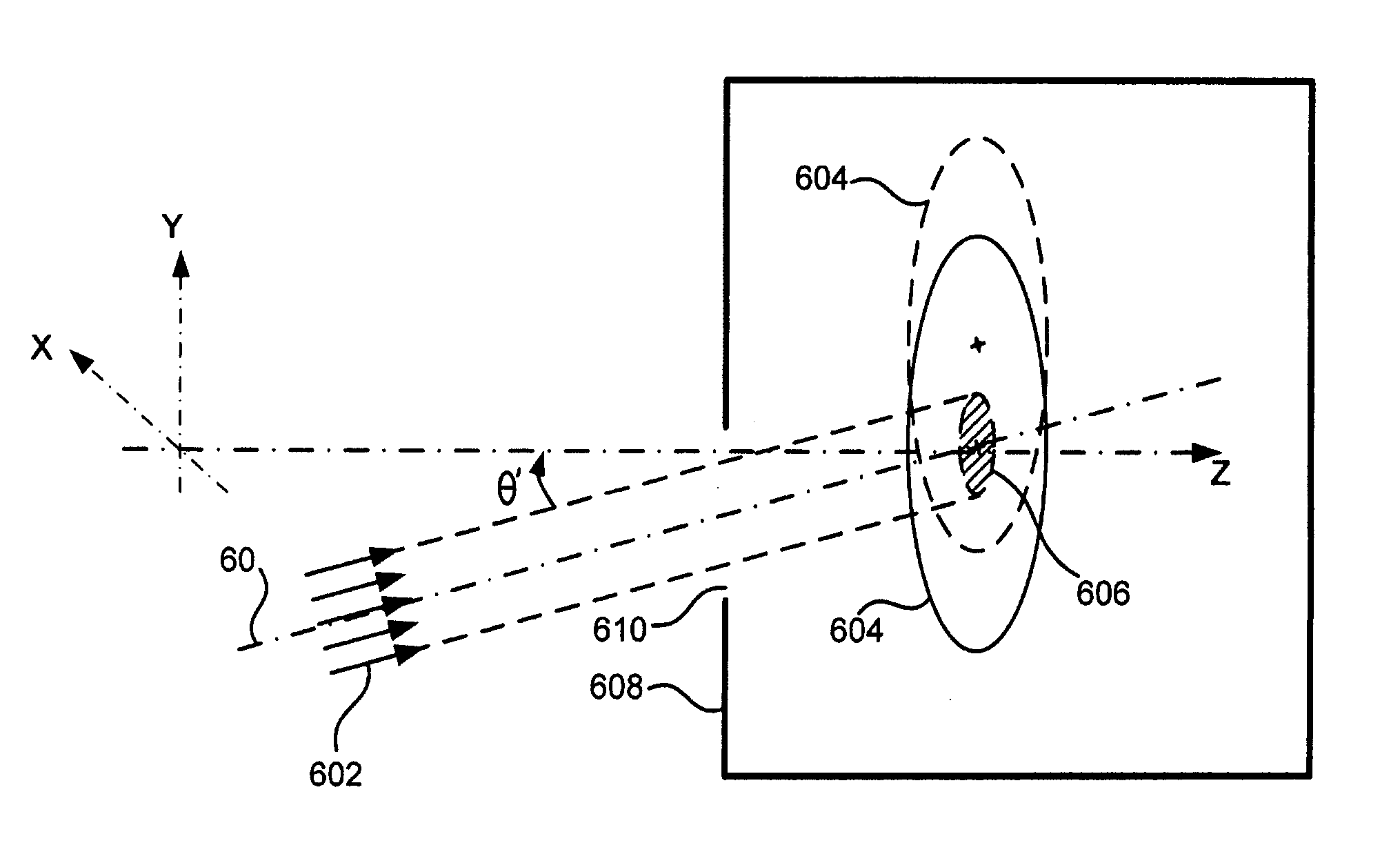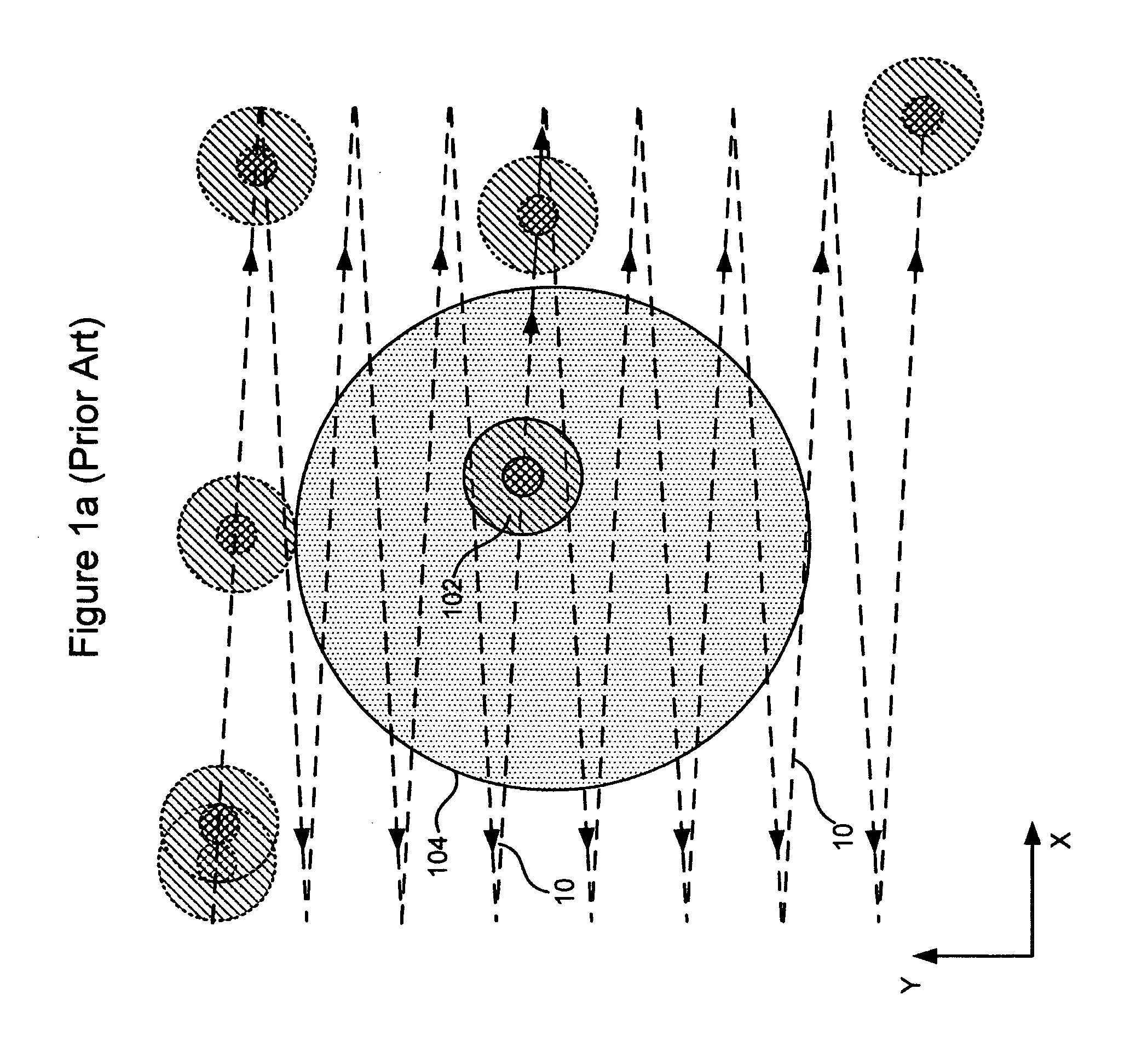Technique for isocentric ion beam scanning
a scanning and isocentric technology, applied in the field of semiconductor manufacturing, can solve the problems of beam-line variation, beam utilization and uniformity tuning, and unique challenges of low-energy ion beams, and achieve the effect of preventing charge buildup
- Summary
- Abstract
- Description
- Claims
- Application Information
AI Technical Summary
Benefits of technology
Problems solved by technology
Method used
Image
Examples
Embodiment Construction
[0035] Embodiments of the present disclosure provide a new approach for isocentric ion beam scanning wherein an ion beam is tilted to a predetermined angle before the ion beam is directed into an end station for isocentric scanning of a target wafer. With the ion beam maintained at the predetermined angle, there may be no need to tilt the target wafer itself. As a result, isocentric scanning of the target wafer may involve a two-dimensional (2-D), rather than a three-dimensional (3-D), translation of the target wafer. Since it is no longer necessary to tilt the target wafer or to coordinate its 3-D movements, the end station may have a simpler and therefore less expensive design.
[0036]FIG. 6 illustrates an exemplary method for isocentric ion beam scanning in accordance with an embodiment of the present disclosure. In an ion implantation system, an end station 608 may hold a wafer 604. The normal direction of the wafer 604 may be aligned with the Z direction.
[0037] First, an ion be...
PUM
 Login to View More
Login to View More Abstract
Description
Claims
Application Information
 Login to View More
Login to View More - R&D
- Intellectual Property
- Life Sciences
- Materials
- Tech Scout
- Unparalleled Data Quality
- Higher Quality Content
- 60% Fewer Hallucinations
Browse by: Latest US Patents, China's latest patents, Technical Efficacy Thesaurus, Application Domain, Technology Topic, Popular Technical Reports.
© 2025 PatSnap. All rights reserved.Legal|Privacy policy|Modern Slavery Act Transparency Statement|Sitemap|About US| Contact US: help@patsnap.com



